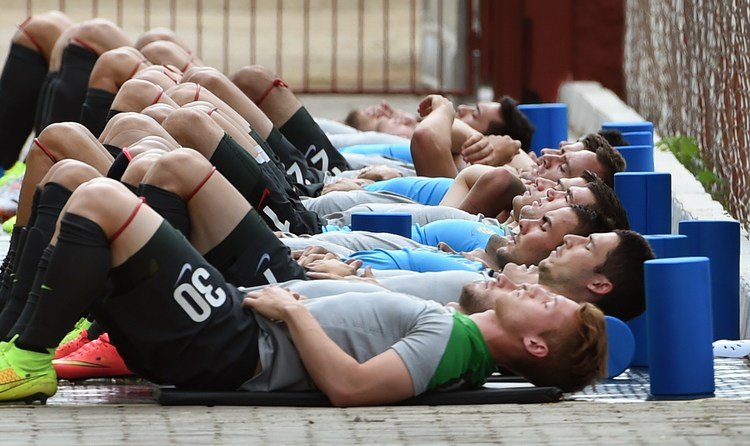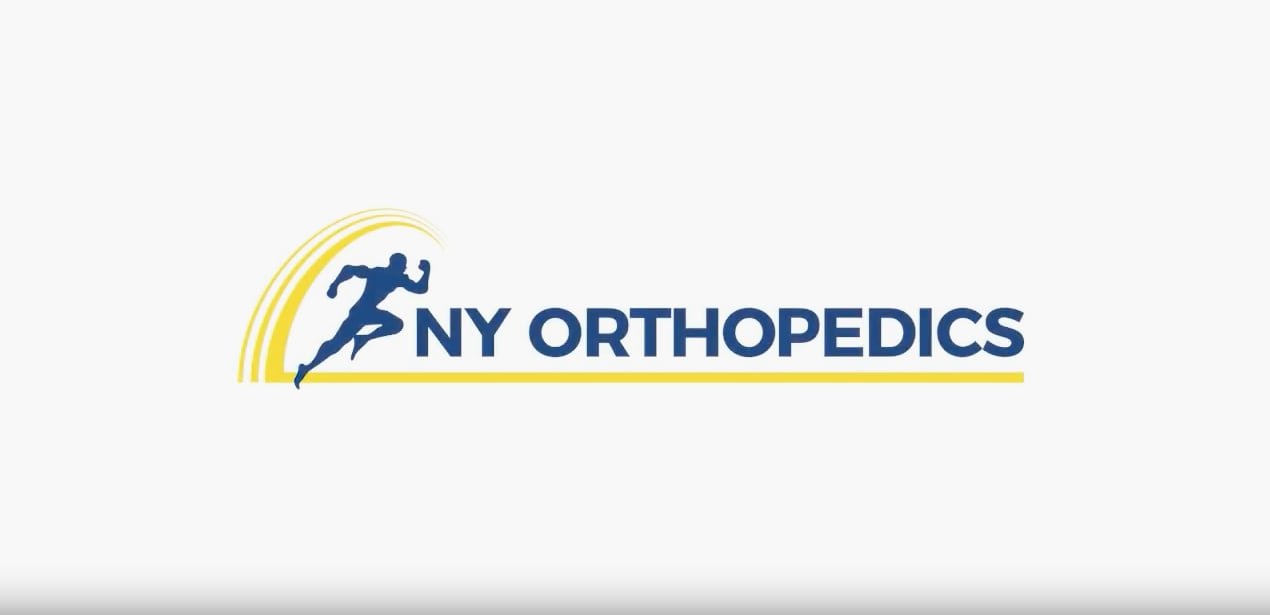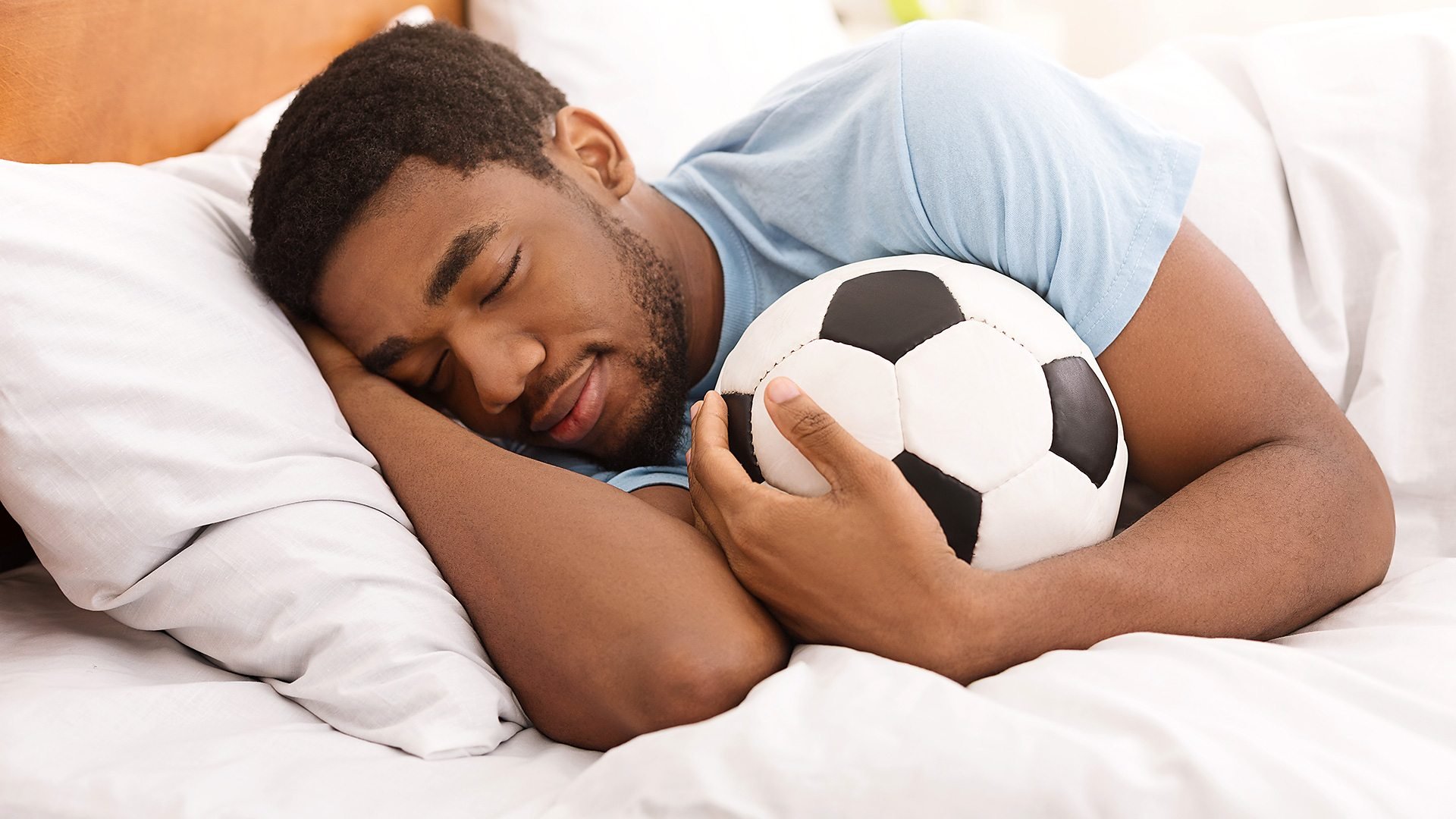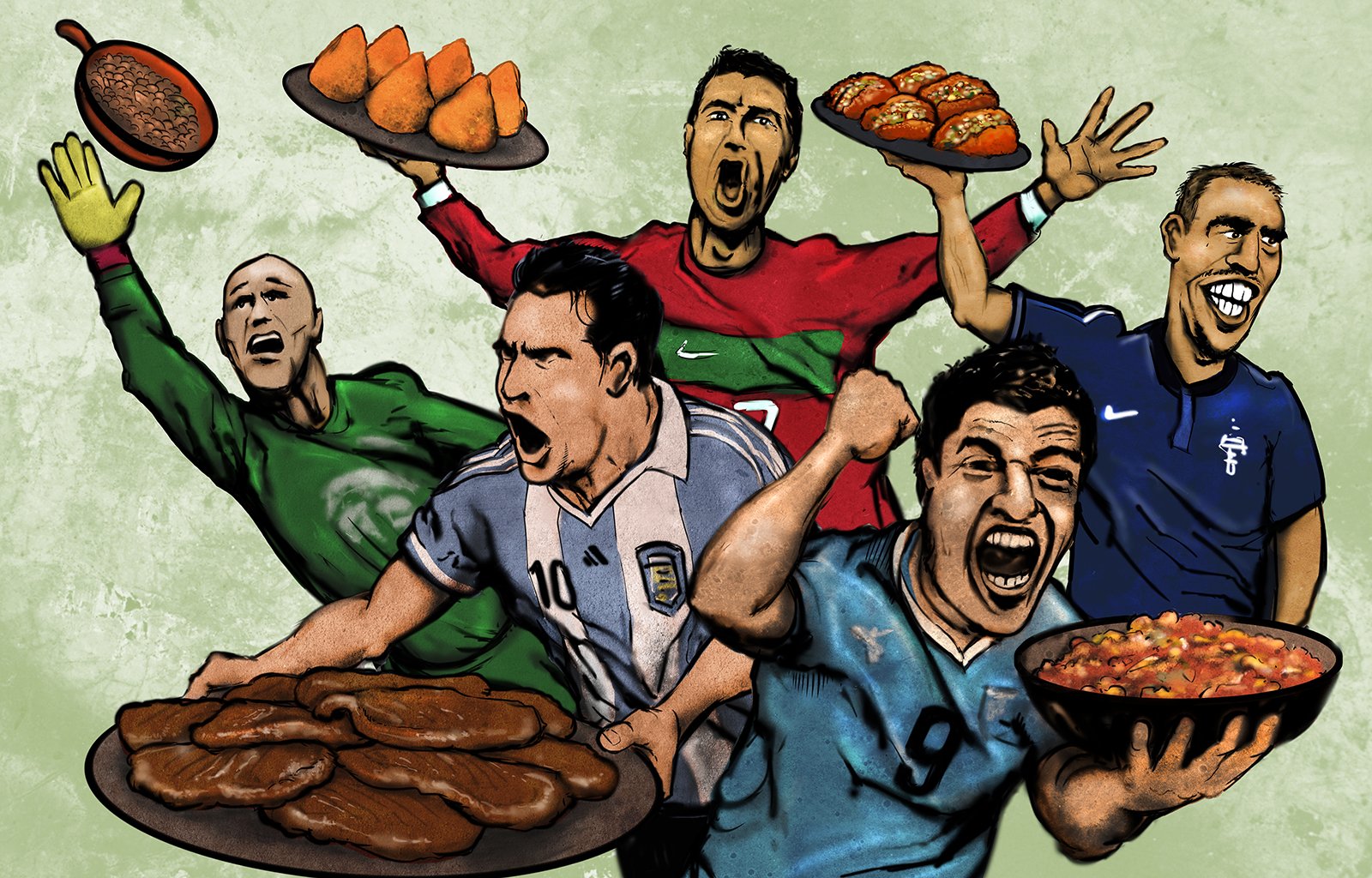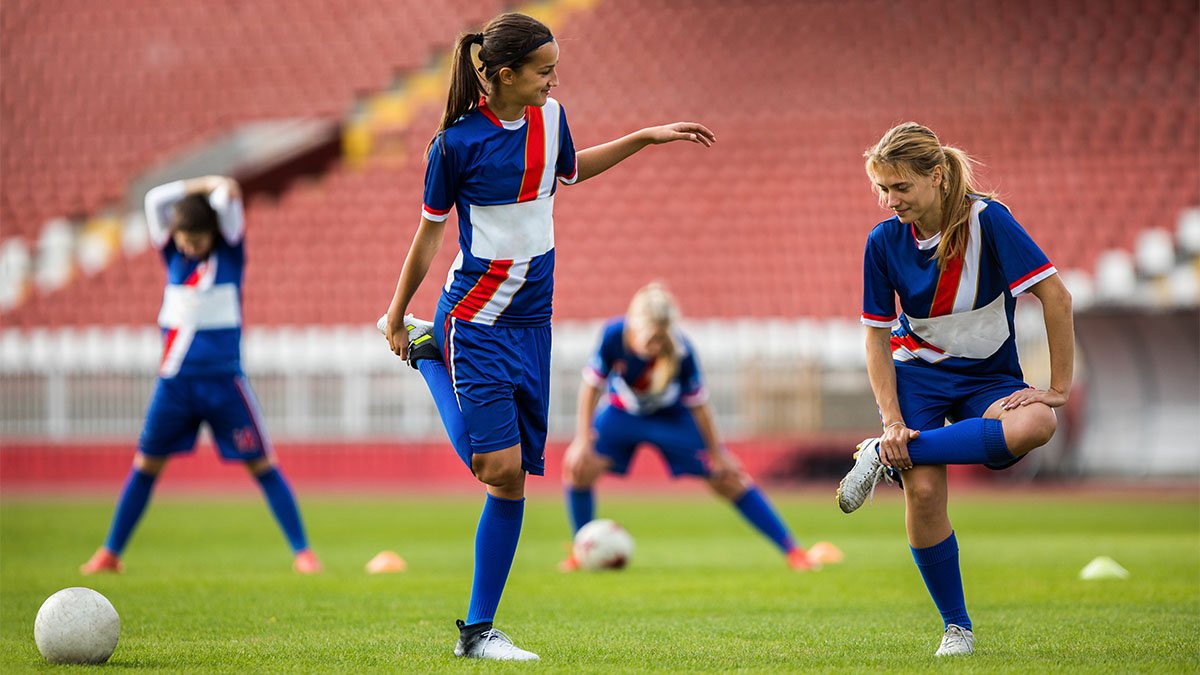The Art of Recovery
Hey everyone,
We’re just about entering the third week of the new year. That means many of us are both mid season, focused on sticking to our New Year’s resolutions, and the regretful, albeit healthy, fad known as dry January.
This post is going to be a small introduction into how to stay healthy over the course of the year, and specifically how to recover.
Unless you grew up with a nutritionist, a doctor, or you’ve done considerable research on your own, you may not really know what to do with yourself when you reach your limit except to keep hitting that wall until you collapse, or to stop completely, neither of which are conducive to a healthy, sustained athletic life (or any kind of life).
It’s a fairly common thing for players to hit the ground running in the new year and not be able to sustain their exercise or soccer goals simply because they don’t think about recovery, so that’s what we’re going to go over here to today.
This post is going to contain pretty generalized advice. While it will get into specifics in certain circumstances, and we will be diving into more detail in subsequent posts, know that your body is different and while all of these factors are important facets in healthy recovery, how much they effect you individually will vary from person to person. So it’s best that you think about them as slices of a pie, and as you train and learn you augment how big a slice each part gets.
Before I get into my unsolicited, unprofessional, generalized advice that I’ve gained over a few decades of coaching and playing sports at a high level, I’m going to point you in the direction of my betters.
Specifically NYOrthopedics. If you ever get injured they should be your first stop on the road to recovery.
NY Orthopedics
NYOrthopedics has been serving the NYC area for over twenty years now, and is one of our sponsors at NYC Footy, a partnership that we’re really happy to have, especially as we get older and more injury prone. You may have seen them at Gov Cup, massaging strains, icing bruises, and just generally giving care where it was needed.
I have first hand experience with them and I can tell you that the care is excellent. Most, if not all, of the doctors there are athletes so they understand what it means to recover as an athlete.
Not only do they have experience on both sides of the coin, both as athletes and doctors, but as an institution they do a lot to make you feel like you’re being handled by people and not like you’re a cog in the medical meat grinder.
Signing up for appointments is incredibly easy, which can be done online in seconds.
They have a very comprehensive recovery program which will give you detailed instructions on what to do day in and day out in order to recovery in the most effective way right on your phone.
Finally, and maybe most importantly, while they take most insurances, if you’re uninsured they will go a long way to help out to make sure your health doesn’t suffer for the fear of the bill.
You can find their facilities all over the NYC area, and while I hope you don’t actually need to go visit them, should you get injured I wouldn’t really recommend you going anywhere else.
The rest of today’s post is going to be focused on the three main ways you can avoid going to see them, and how to take care of yourself through the year in very practical, no-nonsense way.
Let’s start it off with inarguably the most important way to recover.
Sleep and rest.
You can think of sleeping like investing in Apple 30 years ago. No matter how hard you work (how much stretching, icing, compression you do), nothing you do will net you the same return as just sleeping well.
This extends not only to sleep, but also to resting while you are awake. If you exercise 7 days a week without any time for your body to rest, you will see diminishing returns on the exercise that you do.
Resting and allowing your body to recover is the bedrock of what allows your body to take action and if you don’t do it, your performance, on the pitch, in the gym, running, wherever, will dwindle over time and you will inevitably hit a wall, rendering a lot of your hard work moot.
Sleep and rest represent the best and worst things about recovery.
The best thing is that your body is complex, highly intuitive, and it will repair itself without you needing to ‘learn’ what to do.
The downside is that to a certain extent you have to let go of control and allow your body take its course towards recovery. And if you try to speed up that recovery process, you’re going to inevitably add weeks, if not months or years, onto what could have been a fairly minor injury.
All of this is in service of saying, protect your sleep, let your body recover, and take rest days. It is as important than the exercise you do.
While rest and sleep do make a huge difference and are vital to your recovery, there is a lot you can do outside of your exercise routine that will ensure you stay active and healthy for the long run, sticking to those resolutions for months to come (or to throwing them out the window like the rest of us, but in a way that lets you still feel and stay healthy).
Nutrition
You are what you eat is just very real. What you put into your body will become your body. I don’t think a scientist would ever say it that way, but in essence that’s what happening.
There are certain stipulations within that. Obviously if you eat incredibly well and you sit on your couch all day, what you eat will make less of a difference if it is incredibly healthy or not.
I’m sure none of this is news to you at this point, but it bears repeating because what we eat and drink is a question that we’re faced with probably dozens of times a day and so it bears creating a little bit of a plan around.
I’m going to lay out three easy tips for how to becoming more nutritionally aware and healthy. This isn’t a diet plan. Not only does everyone’s body absorb nutrients differently, the amount of exercise each person does is different, but also people’s ability to spend money on food will be drastically different and a lot of ‘healthy’ food is simply more expensive and so is unavailable to some people. Therefore my suggestions are all tailored towards everyone, regardless of your diet, exercise plan, or food budget.
#1, plan your weekly activities: Thinking about how you’re active should be a big part about how you want to eat.
You should eat differently on a day when you exercise (carbs early in the day, even some sugars close to when you exercise) as opposed to a rest day (cheese, mostly cheese). Sincerely though, your body will take in and use nutrients different in activity versus rest, so take 10 minutes every Sunday, mark each day you are going to be active, and then adjust what you eat that day accordingly.
#2, avoid food fads. There are a ton of fads around nutrition that just aren’t real and are really a marketing gimmick.
The best example I can give is actually making a resurgence right now, which is cottage cheese. Yes. Cottage cheese, the food that sounds the most like a clogged artery, was marketed as a health food in the 80s, and is once again being lauded as a health food.
Without getting incredibly bogged down in the details, while cottage cheese is high in protein, it is also fairly dense in fat and cholesterol (less cholesterol than other cheeses, but when cheese is the comparison it’s not a great thing).
I bring this up only to say, don’t take these fad foods and diets at face value and don’t let them push you towards drastic changes in your diet all at once. Fad diets tend not to work and more often than not, they create a situation where you rubber-band back to the old eating habits you were trying to grow out of in the first place.
Is it ok to incorporate them into your diet? Of course it is, but don’t let them become the basis for everything you deem healthy. Instead, build around health foods you enjoy eating and cooking at home where you can control the ingredients, flavors, and cost.
#3, become nutritionally literate.
More than anything, this is going to help you make healthy choices about what you put in your body. Start by just learning how to read the labels on your food. Do you know the difference between unsaturated fat and polyunsaturated fats? It really is not a high bar, I promise.
From there, if you want to, you can move on to learning how your body processes carbs, proteins, and fats, but even if you stop at being able to read a label, it will help you so much in terms of putting a plan in place that suits your lifestyle so you can ignore people like me.
Warm-ups and Active Recovery
The final major block in the foundation of general healthiness is warming up and active recovery.
I’m talking about active recovery and warming up in the most basic senses, referring to jogging and stretching before the game, and stretching a bit after.
Warming-up is pretty self-explanatory and should be pretty obviously good idea. I see maybe 99% of players walk on and off the field in Footy without stretching, warming up, or cooling down (shout out to my friend Randy, who is 42 and still plays at a high level, because he stretches and warms up).
For the love of God, touch your toes, bend your knees, and swing your arms a little bit before you go full tilt on the pitch.
If you wonder why you hit a wall about 3-5 minutes into the game, it’s not because you don’t have the energy to play longer, it’s because your body wasn’t ready to dive into the deep end so quickly and it needs a little bit of time to establish a rhythm.
My view on warming up is that it’s like an on/off ramp to a highway. You have to build up your speed as you enter the highway, and reduce your speed as you come off. You don’t just go 0-60-0 when getting on and off.
If you sit at home or in an office for 6-8 hours, then get over to the soccer field and start sprinting immediately, you’re body is going to hate you and you’re just asking to pull a muscle.
Active recovery is the same framework as warming-up just on the back end. Stretch a little bit after your game while everyone is taking off their shinguards and cleats. It will help your body re-situate to not being as active
There is so much more that I want to talk about in terms of recovery, but as this is a brief introduction and overview, I’m going to cut it off here for today.
Don’t worry though, as this is just the first of an on-going series that will be rolling out this year, that focuses on how we can help you take care of your bodies as you strive towards whatever your fitness and Footy goals are.
-James
